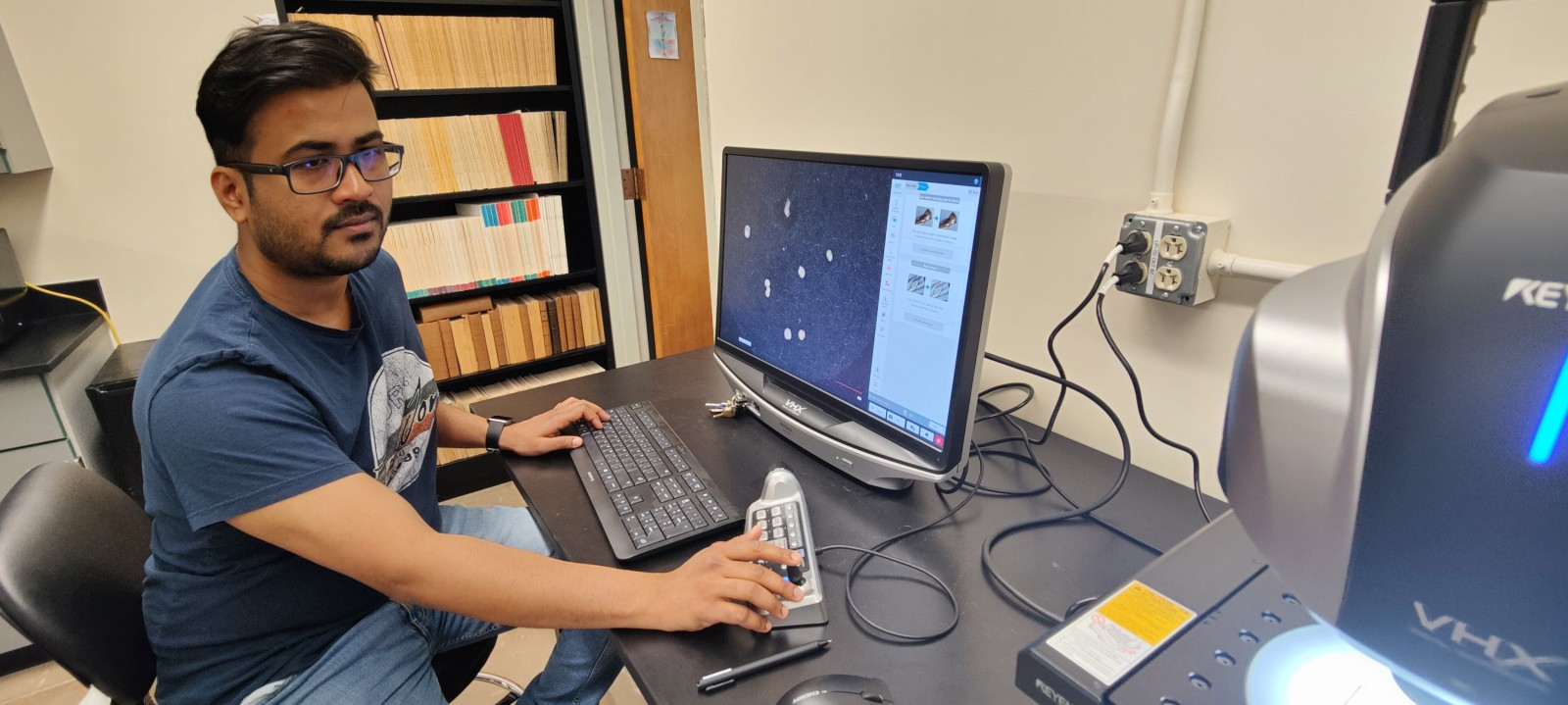Under the sea: PhD student to take part in research expedition in the Mediterranean
Ravi Kiran Koorapati, an international student from India, uses fossils to reconstruct ancient ocean conditions

Ravi Kiran Koorapati has never been on a research vessel before, but finds himself both eager — and a little nervous — to hit the high seas. (Yes, he’ll bring anti-motion sickness medication with him.)
“It’s a one-of-a-kind experience,” said the Binghamton University doctoral candidate in Earth Sciences.
International Ocean Discovery Program (IODP) Expedition 402 leaves Feb. 9 out of Napoli, Italy, and returns April 8. Koorapati is the crew’s micropaleontologist, specializing in tiny fossils known as planktic foraminifera.
An international student from India, he earned his bachelor’s and master’s degrees in Geological Sciences from the Indian Institute of Science Education & Research (IISER) in Kolkata, India, followed by a second master’s in Geosciences with a specialization in Paleobiology from the University of Erlangen-Nuremberg (FAU) in Germany. He was interested in exploring paleontology and paleoceanography for his doctorate, and his search led to Binghamton University Assistant Professor of Earth Sciences Adriane Lam, now his advisor.
The IODP expedition focuses on an area known as the Tyrrhenian Basin, located off the west coast of Italy. The Mediterranean Sea consists of four basins; the Tyrrhenian, which formed around 10 million years ago, is the second westernmost, located next to the Alboran basin, which connects the Mediterranean to the Atlantic Ocean. The Alboran is the youngest; around 5 million years ago, a previously blocked passageway opened up, connecting the Mediterranean with the Atlantic Ocean and changing global ocean currents.
There is an area within the Tyrrhenian Basin where the Earth’s mantle, typically located below the crust, approaches the surface, a phenomenon known as exhumation. Scientists on the expedition are investigating the continent to ocean transition and the processes responsible for that exhumation, Koorapati explained. Over time, sediments have been deposited on the rock layer, which can provide insight into ancient environmental conditions.
“That’s where my study comes in. I’ll be looking at these small, microscopic organisms known as planktic foraminifera, and doing geochemical analyses to study past conditions, such as how the evolution of these organisms took place and how they came to these regions,” he explained.
While the expedition provides an opportunity to look at sediments connected to the North Atlantic region, Koorapati’s doctoral research also focuses on the South Atlantic between 13 and 18 million years ago. During that period, the Earth was much warmer than it is today and then began cooling.
These temperature changes were reflected in ocean currents and atmospheric circulation patterns. Warmer water from the tropics, for example, migrated to the poles, where they began melting sea ice — a phenomenon very pertinent to today’s shifting climate.
“As the climate gets hotter, we’re looking to study the impact it will have on the sea ice and (ocean-dwelling) species,” he explained.
